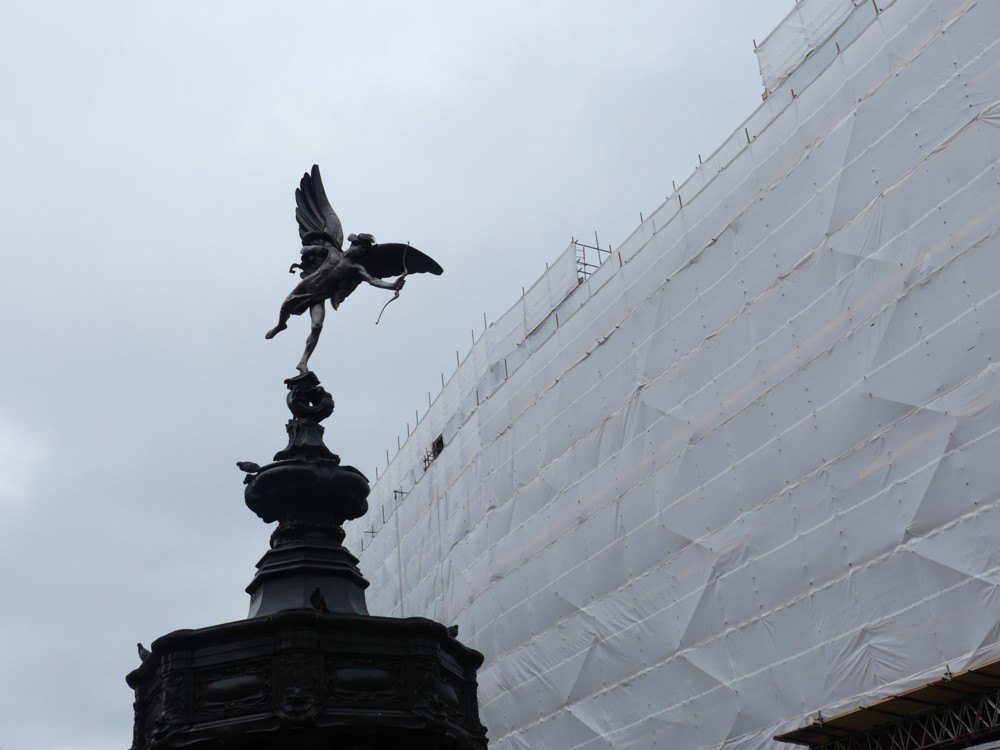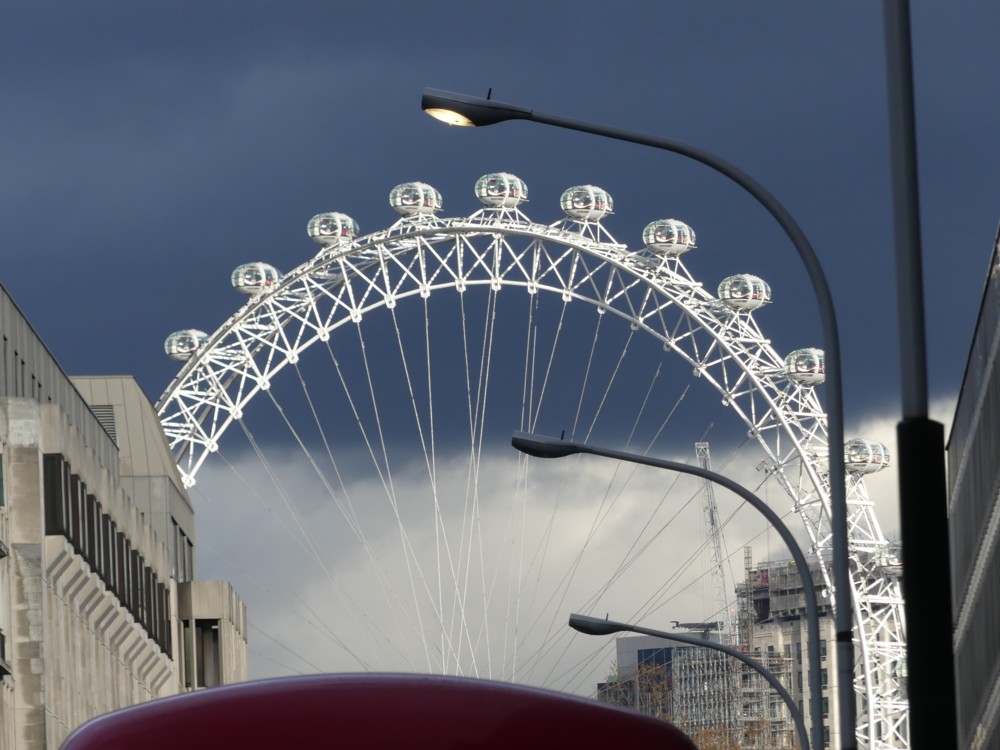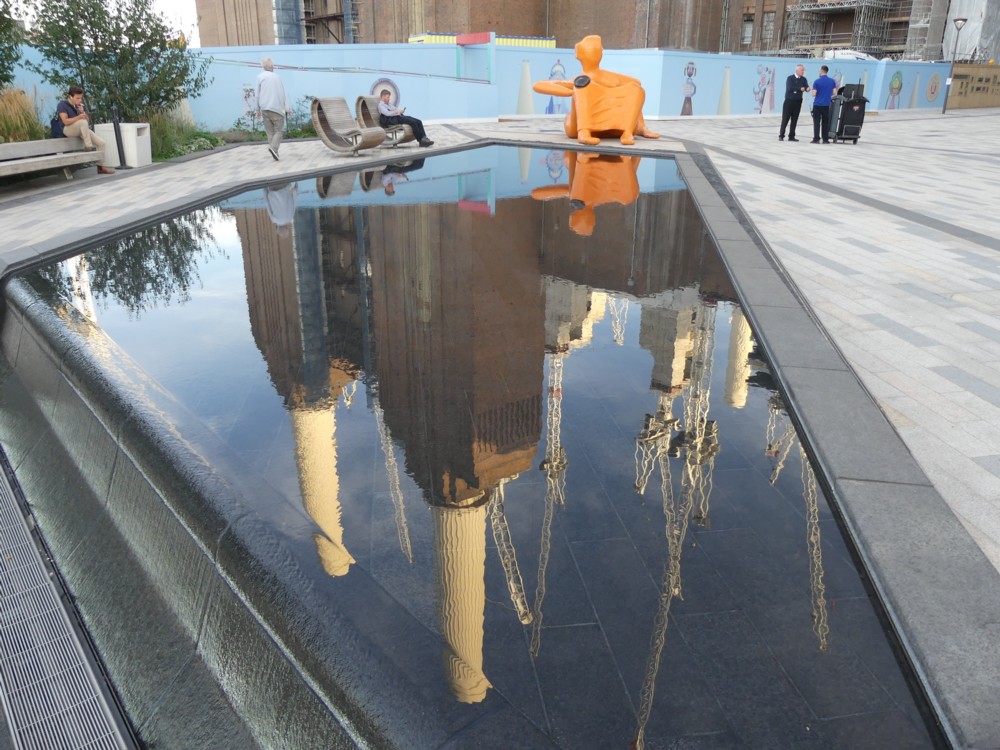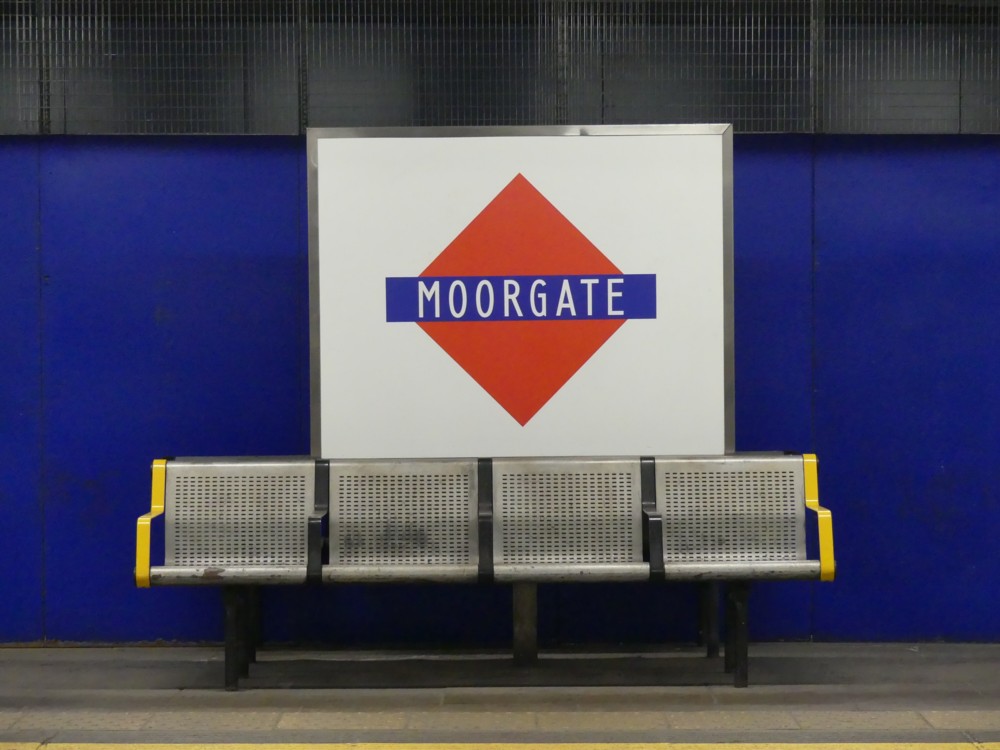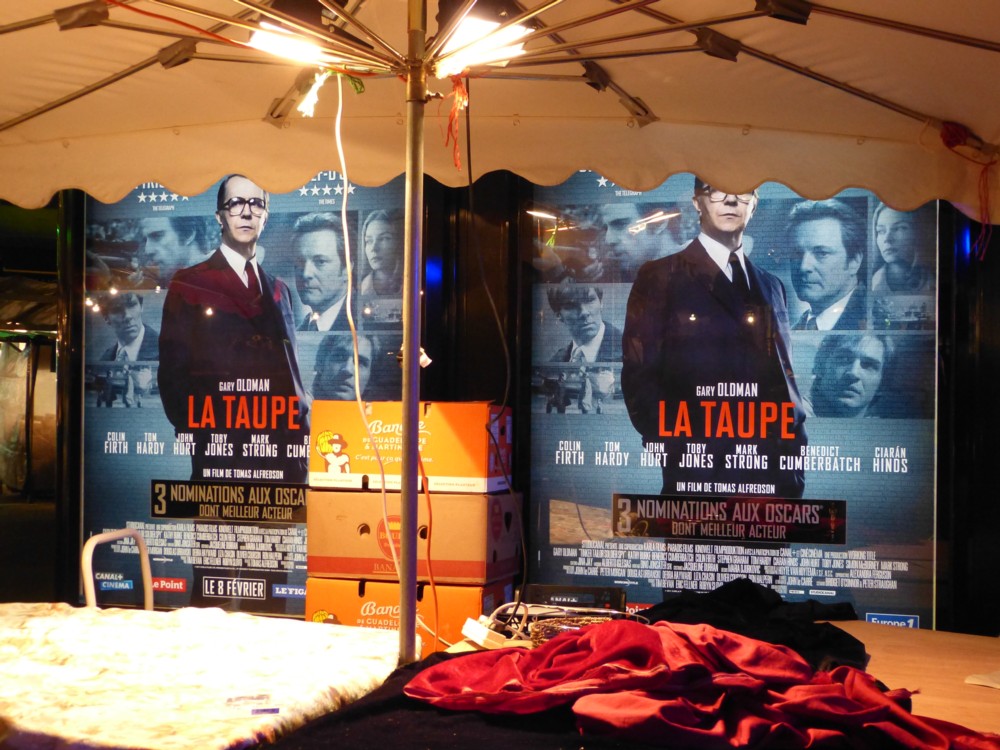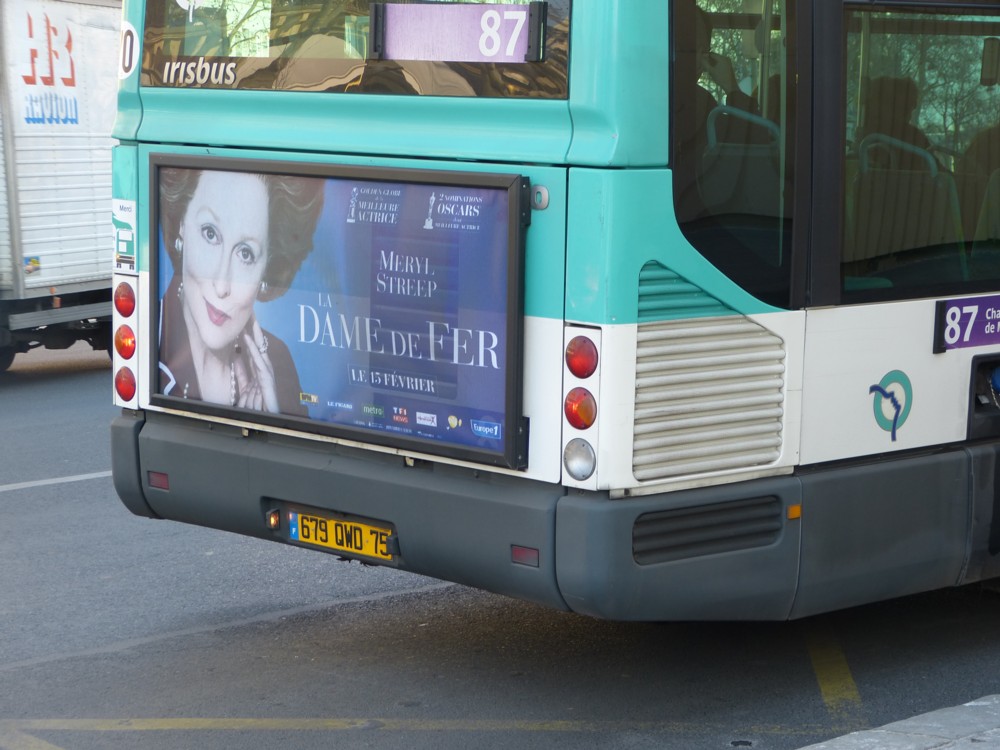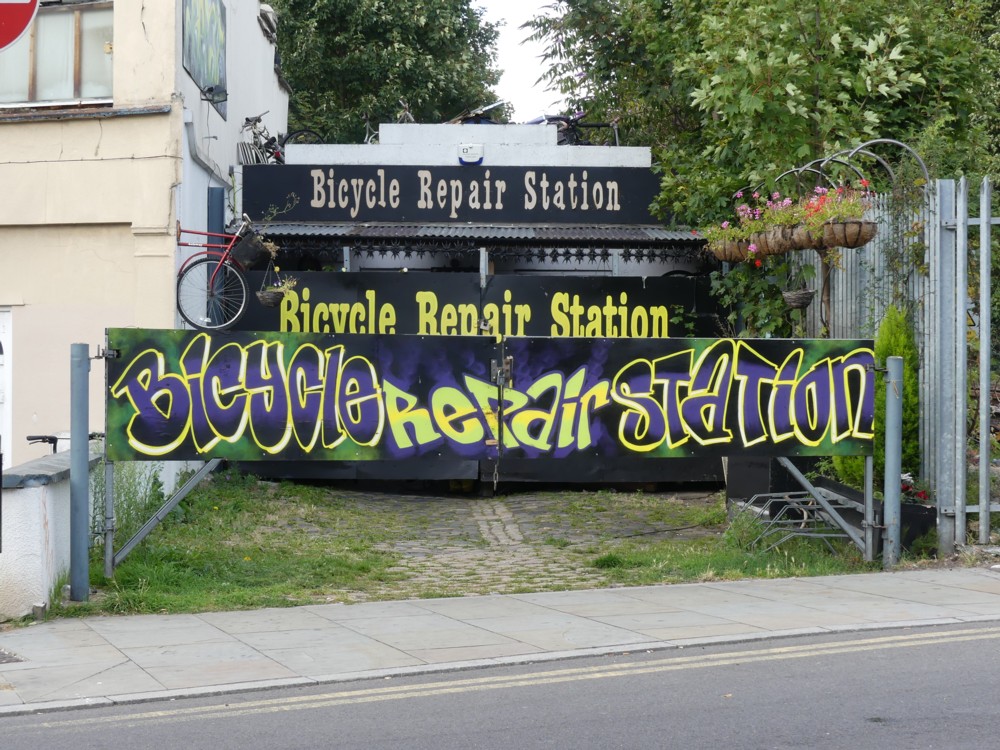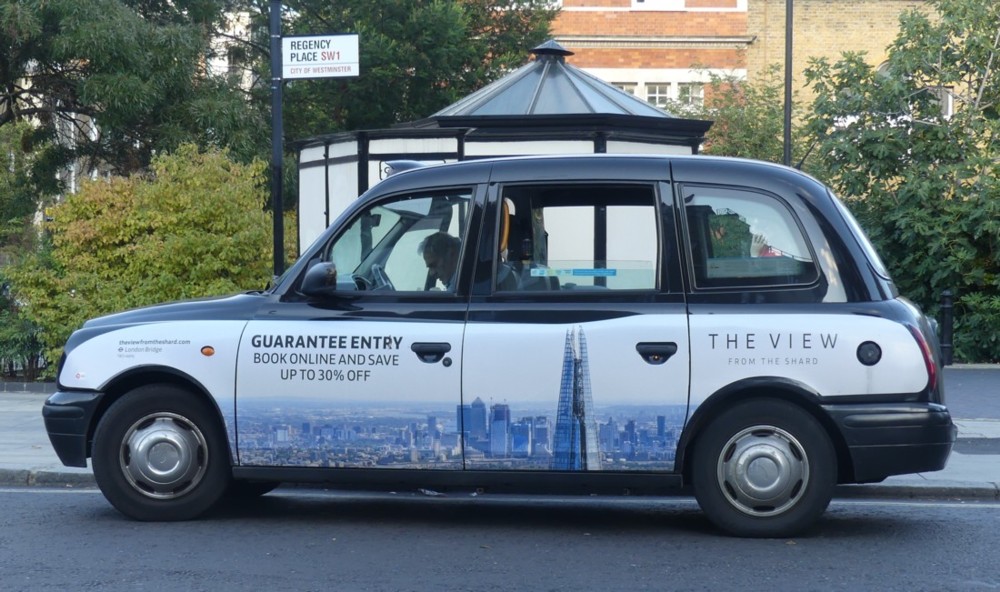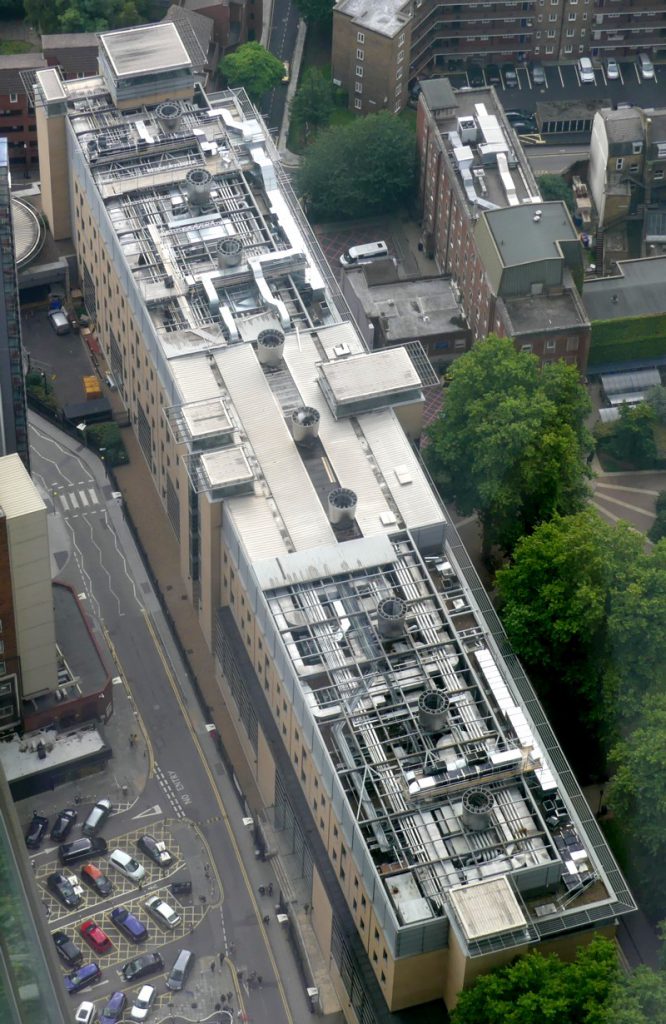I did a posting about a Big Thing Alignment that I saw when I went with Darren to that cricket match at the oval, and I did a posting about how the last ball of that game looked, two days later, on video.
Now for some more photos I took on the day Darren and I went to day 2 of that game between Surrey and Lancashire.
The very first photo I took that day was this:
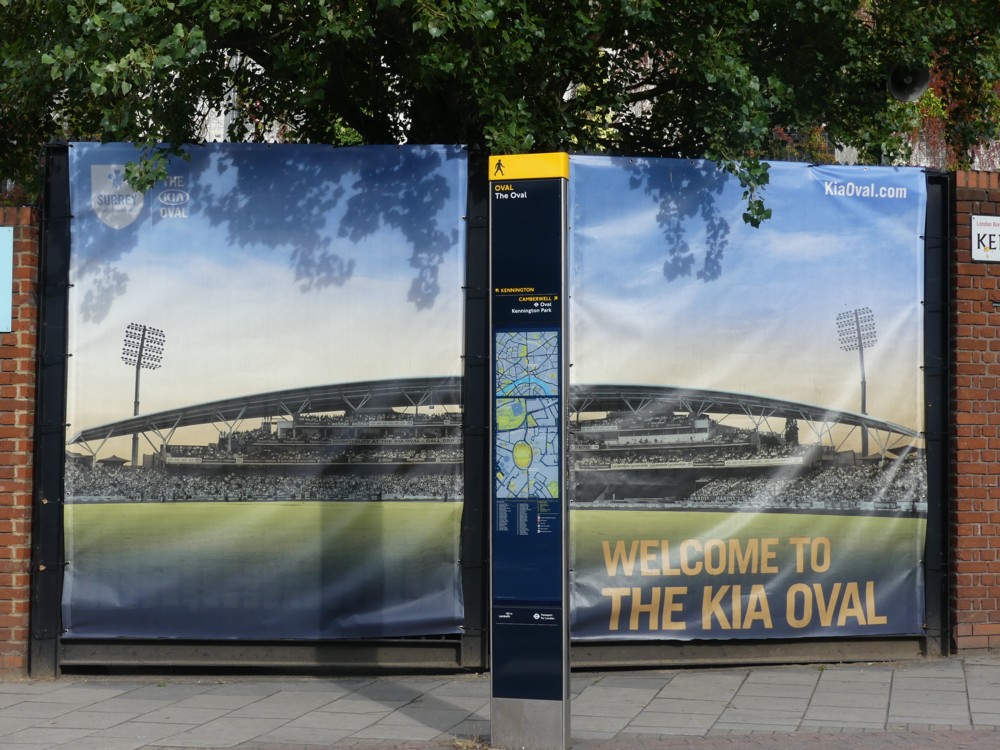
I love how, in the middle of that big photo, we see one of those excellent You Are Here signs that you see all over London, and in many other spots, I don’t doubt, in not-London. I really like these signs, and constantly photo them, if only to remind me for later of exactly where Here was at that particular moment.
Of this OCS stand, SteelConstruction.org has this to say:
This is a most appropriate use of steel, in a geometrically complex arrangement, which adds drama and visual excitement to a famous venue.
I was hoping that this OCS Stand, would be as open for people to sit in as it was in the above photo photo, because I have yet to experience the views from the top of that stand, surely as dramatic in their own ways as the stand itself. But on the evening when Darren and I were there, the OCS Stand was shut. Shame. Memo to self: I will photo these views. If I have to make a special trip to the Oval just to ask about that, fine, I’ll do it, and keep on doing it, until they let me up there, preferably on a nice day.
Here is that OCS Stand, as it was looking at the second interval of the day, which happened not long after we got there:
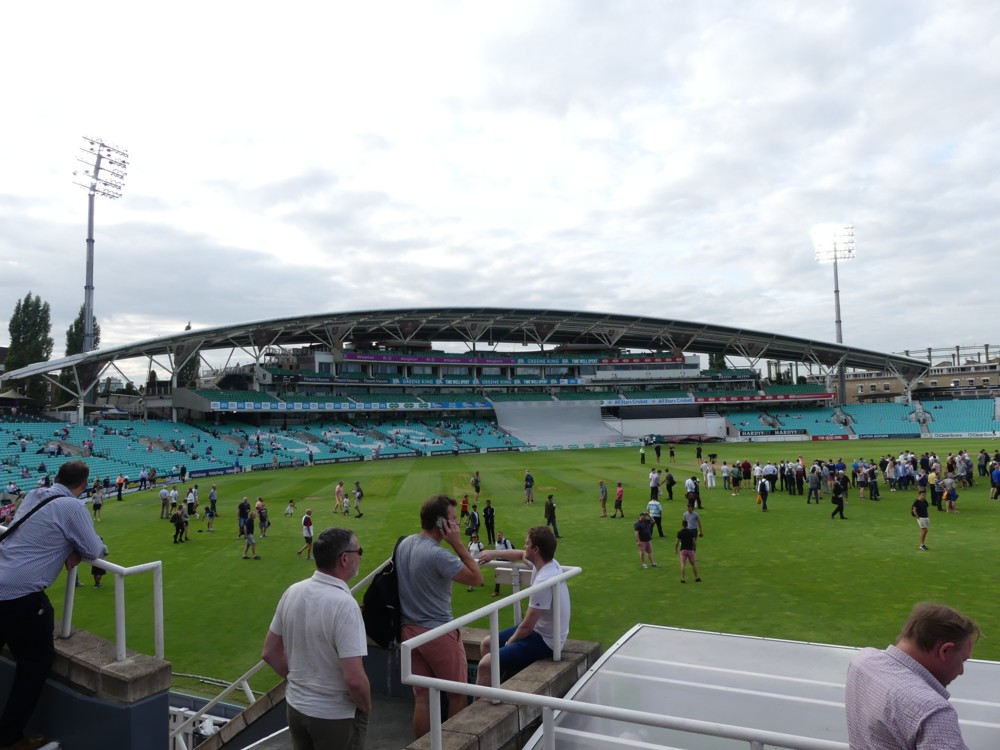
That photo makes the ground look pretty dark, even though the floodlights were on. And it does not deceive. The ground did indeed look dark, to the human eye.
Here is the Pavilion that faces the OCS Stand, which is where we soon moved to:
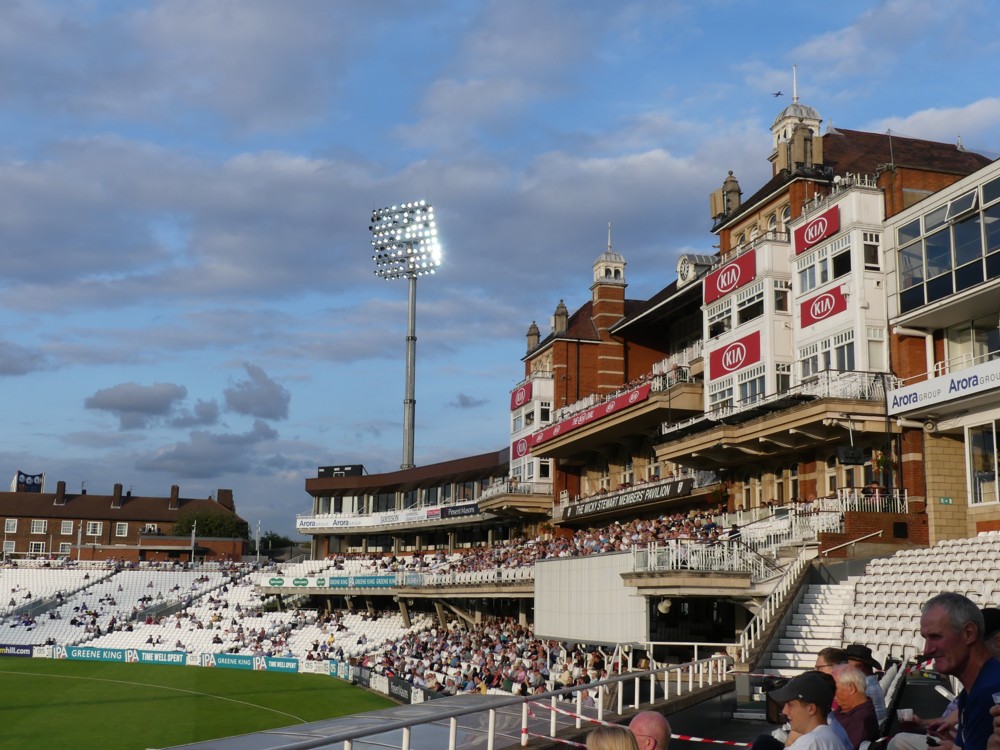
Some like ancient, and dislike modern. Others dislike ancient, and like modern. Me? I like both, and particularly like it when they are near each other, or (as in this case) facing each other, and I can relish the contrast.
One of the particular charms of cricket grounds – this being especially true of the two big London grounds, the Oval and Lord’s – is that they feature both (fairly (at least in style)) ancient, and (very) modern architecture. In comparison, I find big stadiums built all in one go very dull. I went to a football game at Wembley, and if it hadn’t been for the big arch on the top of it, it would have been totally anonymous. It’s not just the architectural uniformity. It’s also that in a place like Wembley there are no gaps, and you can’t see anything except the stadium. You could be anywhere.
Darren and I, what with Darren being a Surrey Member, sat in those seats at the top, in the middle, and when you look out from there, across at the OCS Stand and to the left and the right of it, you couldn’t be anywhere but London. Here is another view looking to the right, which includes that earlier Big Thing Alignment and several other random Big Things besides:
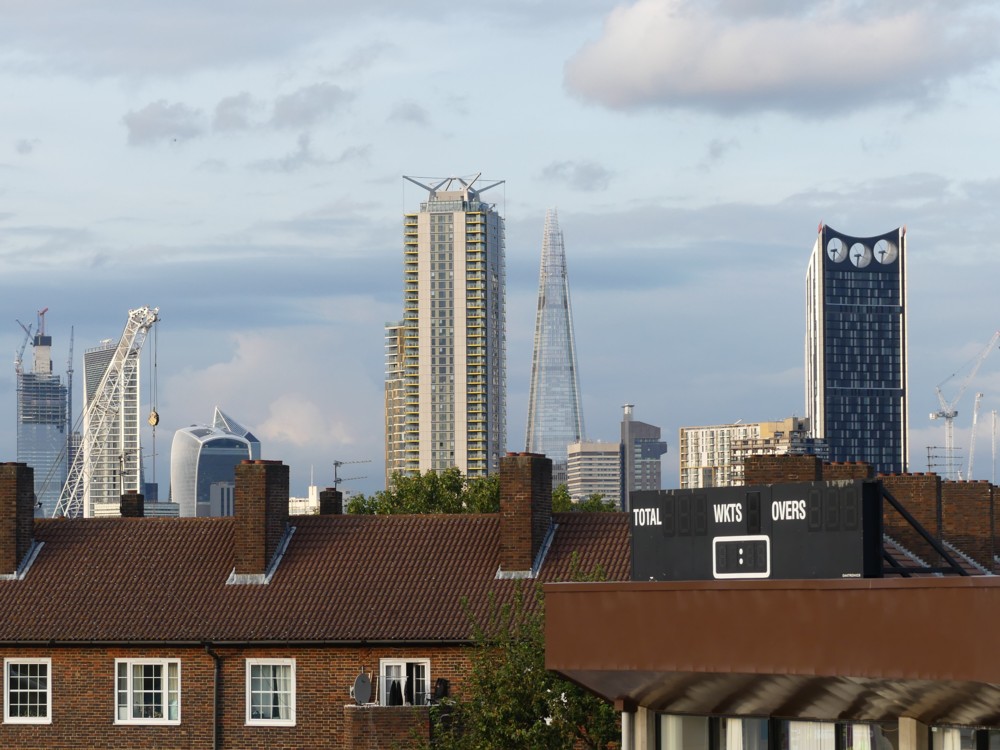
And here is the view to the left, towards Battersea, where the new US Embassy, just up river from MI6, has detonated a building boom:
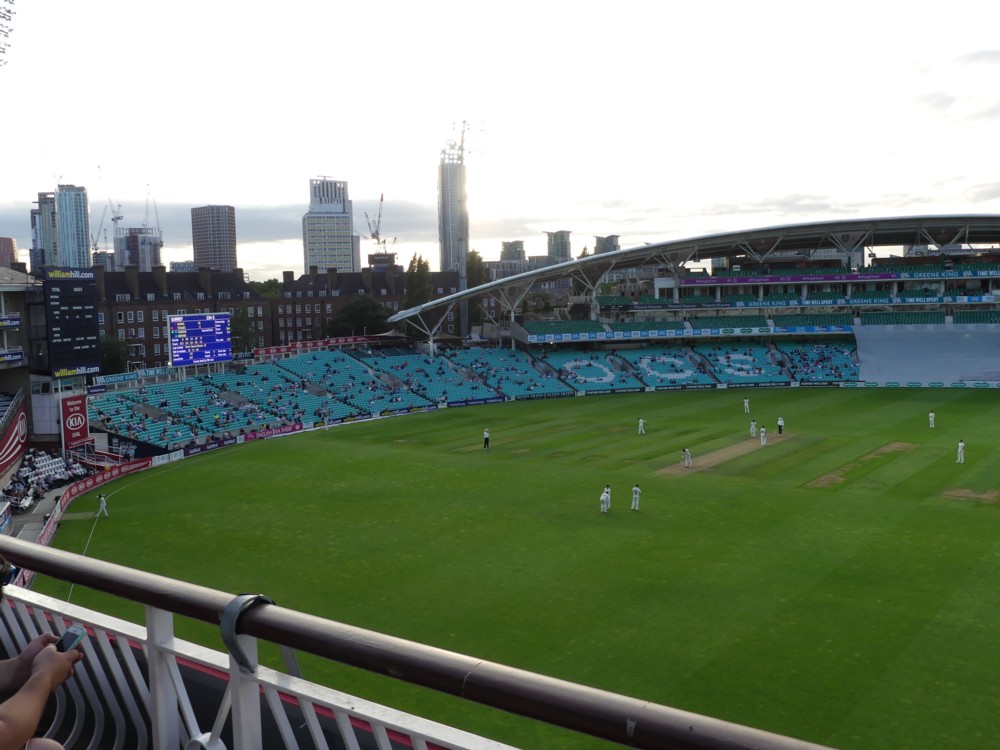
But forget the US Embassy. The reason I am showing you the above photo is to tell you how very dark the ground had become. Forget playing cricket. How on earth can you even see anything on that cricket pitch?
But seeing things on that pitch soon became very easy. Quite soon afterwards, observe how very light the ground had become:
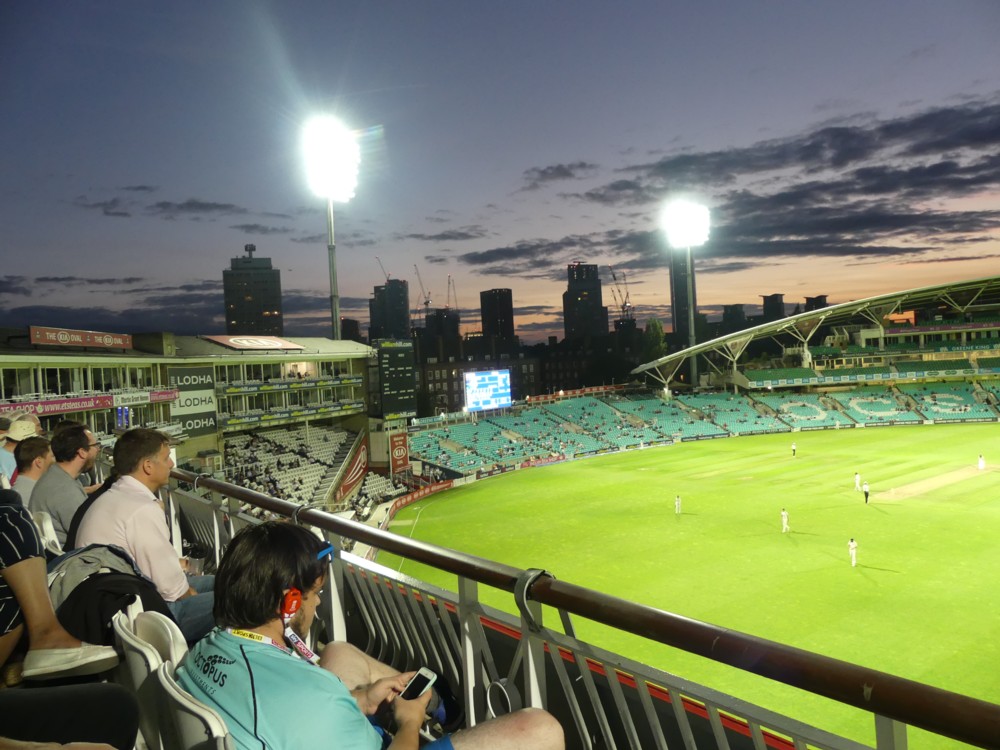
The floodlights were blasting away in both of those photos, not just in the second one. Yet, in the first, they were being totally outshone by the paltry remnants of daylight. Only when daylight had seriously dimmed did the floodlights suddenly start to make their presence felt. And even then the sky is still quite light, especially down near the horizon.
I have been to the Oval quite a few times, but don’t recall witnessing the extremity of this contrast ever before. I think it helped that we were looking down on the ground from quite a height, onto the brightness of the ground. But basically, I’ve never been there when it was properly dark before.
The reason the above photo, especially of the people near me to the left, looks like it was taken with flash is because there is another big clutch of floodlights coming crashing into us from off to the right, very nearby.
Finally, here are a couple of photos I took just after arriving at the ground, through the Hobbs Gate, which is behind the Pavilion, on the far side of the Oval from the river, and from me:
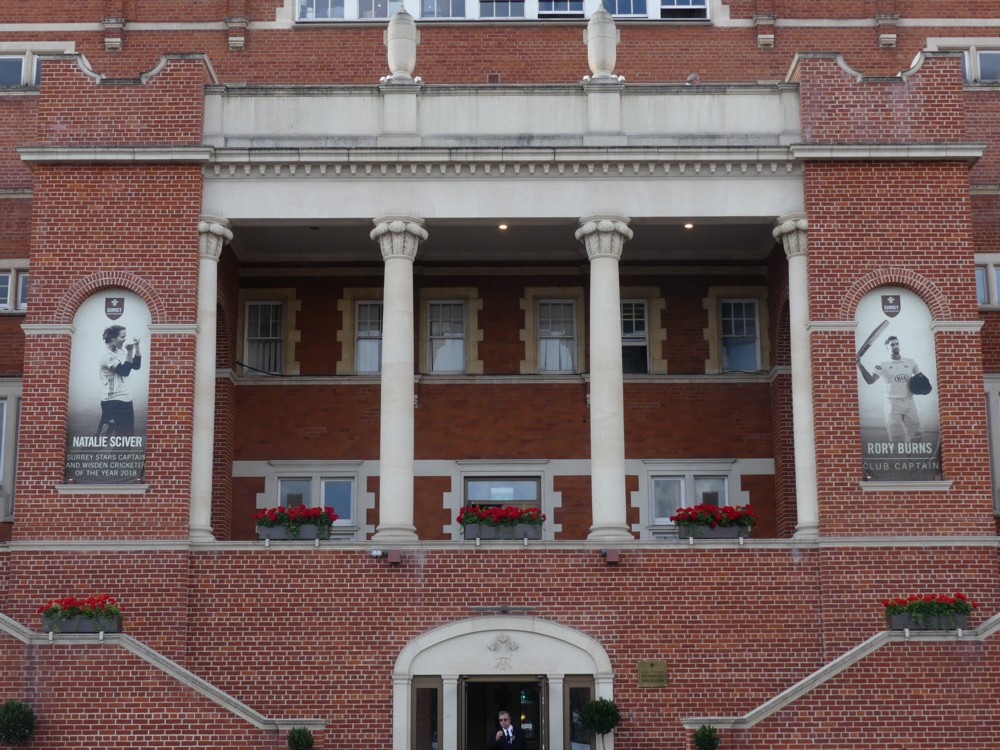
One of the more agreeable features of London’s big two cricket grounds – Lord’s especially – is the number of giant photos there are on show, of cricketing heroes present and past. It was the same when I visited White Hart Lane a while back.
Here is a closer-up snap of the Surrey ladies captain, Natalie Sciver:
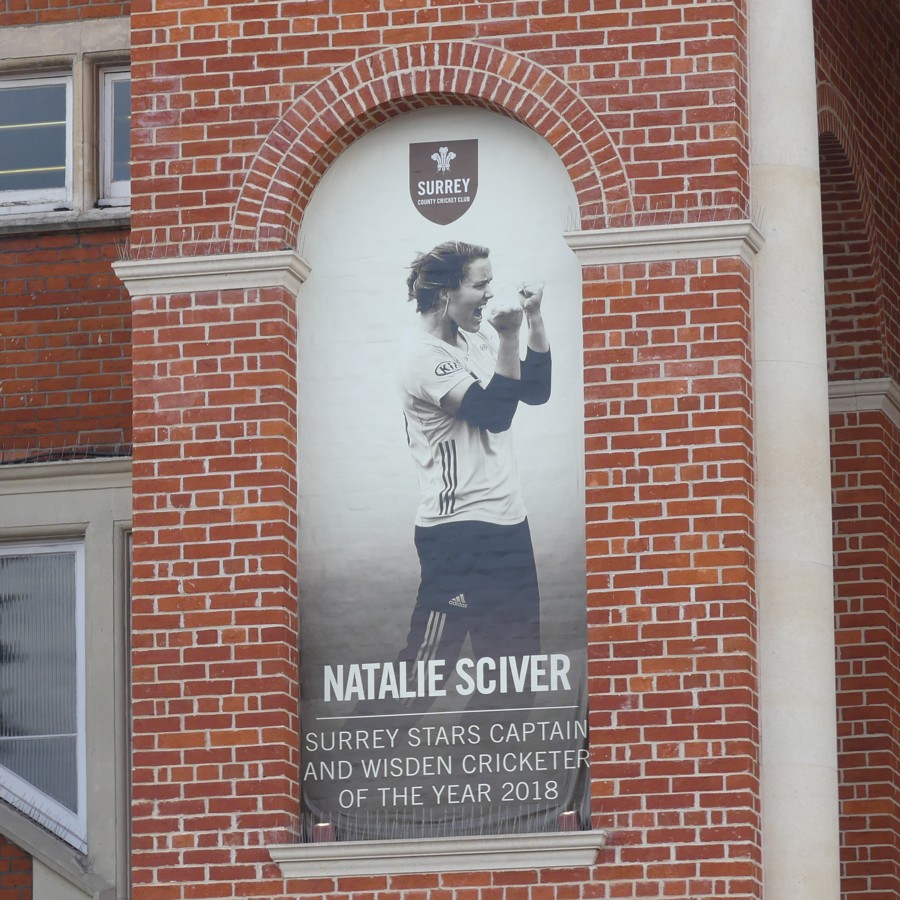
Sciver lead her team to victory on Bank Holiday Monday in the ladies T20 national tournament. Her Surrey “Stars” beat “Western Storm” in the one semi-final, and then won the final against Loughborough “Lightning”. Lizelle Lee got a century for Surrey in the final, but she got good support from Sciver, and Sciver excelled with both bat and ball in the semi-final, which was a lot closer.
I am fond of emphasising how sport has replaced war in the world’s luckier and richer countries. Long may that trend continue. What these giant pictures emphasise, or so it feels to me, is the local significance of big sports clubs, and the way that, in terms of how these places feel close up, sport is also busy replacing religion. This is especially true now that the other great modern challenger of religion in this kind of way, the cinema, is fading back into a merely domestic past-time. The elaborate imagery. The regular attendance at an architecturally impressive locale. The shared agonies and ecstasies of the assembled congregations. The way that the calendar is carved up into a distinct pattern. To me, it all feels very religious, and I am certainly not the only one to have noticed this. (That link took only seconds to find.)
The Church of Cricket is, I quite realise, but a small sect, these days, at any rate in England, compared to the Universal Church of Football. But the point about sport replacing religion in modern life still stands.




